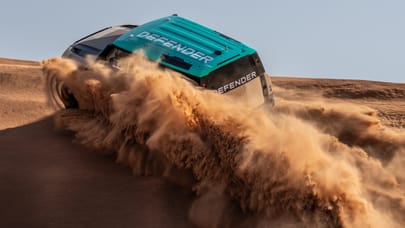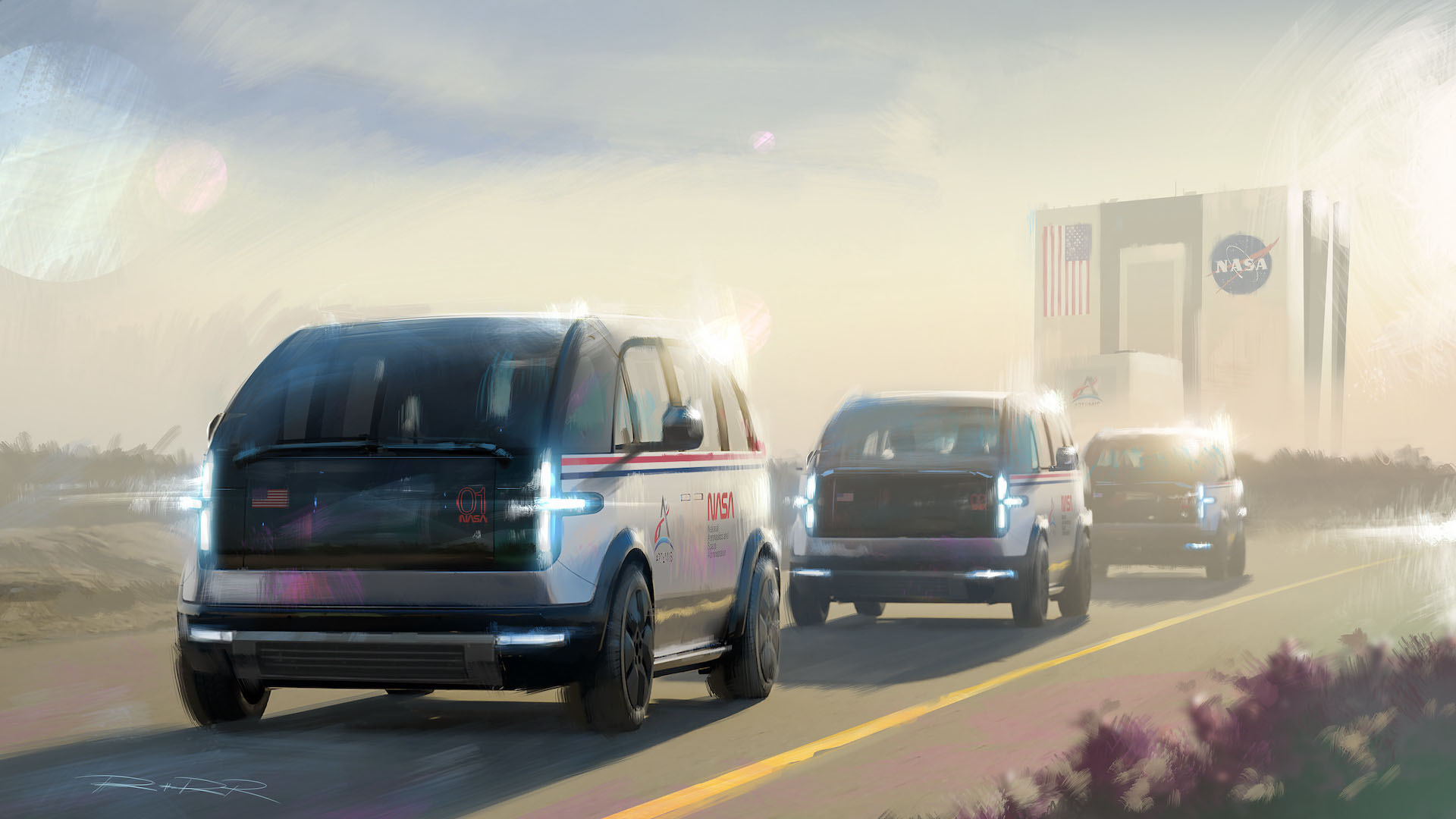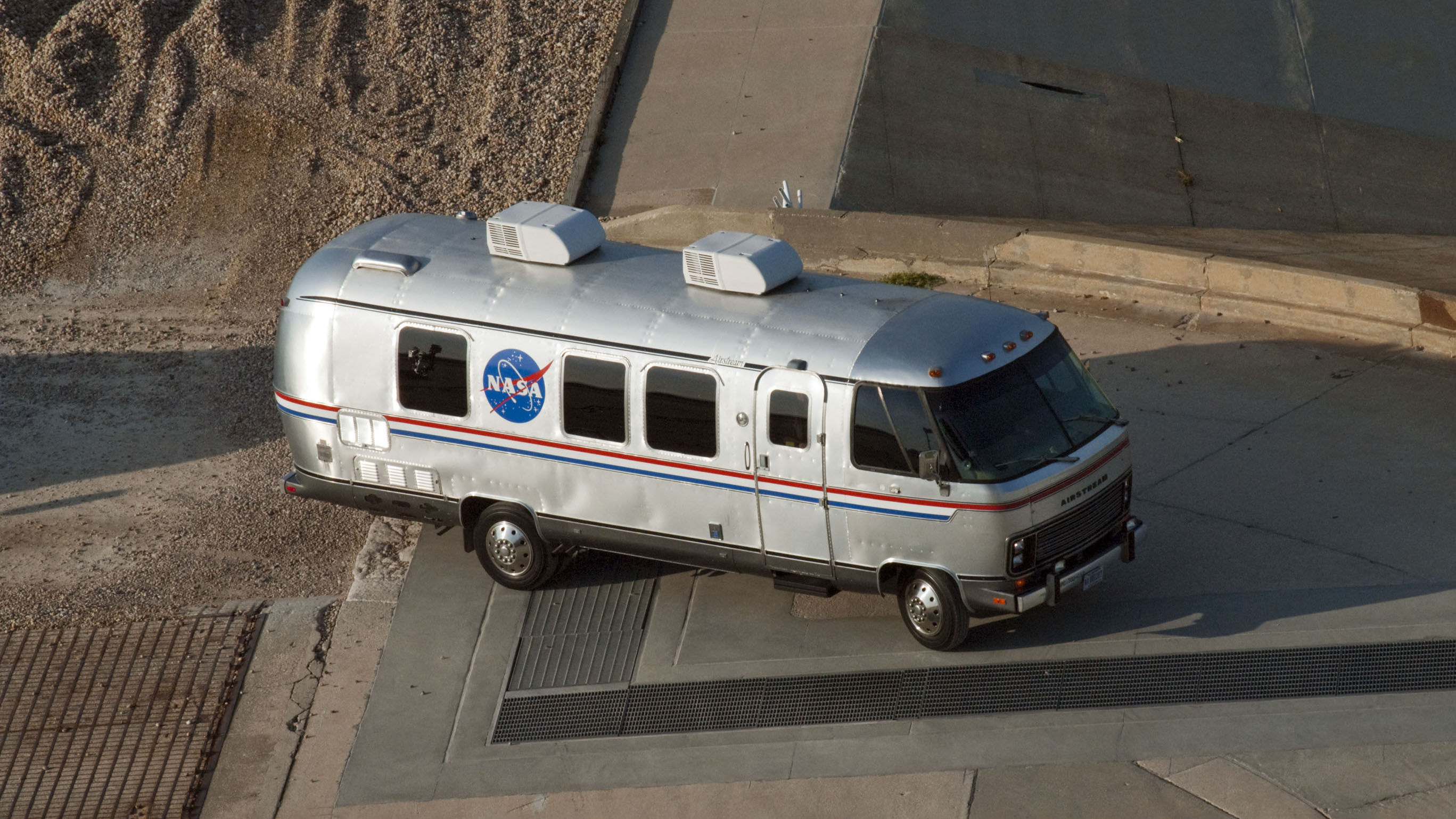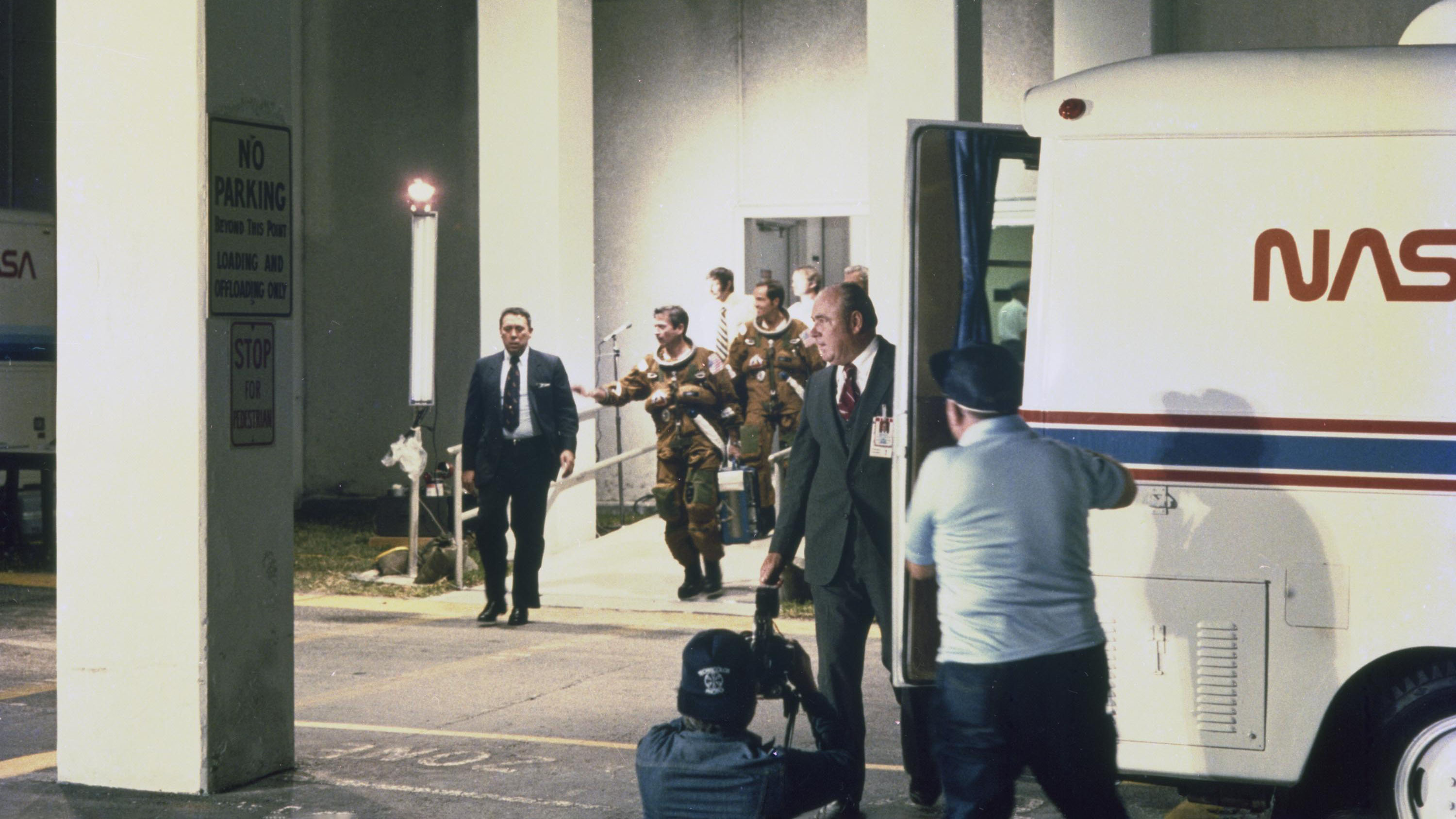
NASA’s new Astrovan is going to be a Canoo
No, not that kind of canoe. This new electric van will ferry astronauts to their rockets...
Space exploration is just a series of problems.
Not to sound all Eeyore about things, but when it comes to space exploration, hurdles seem to multiply like mops in Fantasia. Just getting a rocket to launch properly has enough problems to warrant its own Jay-Z song; add in a few humans and the need to keep them alive and it’s clear you’re going to need a few more notepads and meetings to sort this one out.
But then there’s the stuff you don’t really think about. For instance, a rocket with enough oomph to leave the atmosphere and head off into space has a pretty serious effect on whatever happens to be around it. So, rather than have their entire space centre vaporised with every launch, those clever clogs at NASA put the launchpad about nine miles away from the base. Which means that they need to take the rocket, its contents and its passengers over to the launchpad. Moving the rocket takes a gigantic custom creation that moves about as quickly as a sedated sloth; helpfully, moving the astronauts takes little more than a decked out van. And very soon, that’s going to be a modified electric van from everyone’s favourite ‘oh yeah, they exist’ EV manufacturer, Canoo.
Just to be absolutely clear, we’re not talking about the next moon buggy. That’ll also be all-electric, but then again, so was the original. It was also entirely awesome. We’re talking about the van that takes astronauts from their crew quarters to the launchpad, a job that’s been handled by the ‘Astrovan’, a modified Airstream motorhome, since 1983. There was a brief dalliance with a modified Mercedes Sprinter van dubbed the ‘Astrovan II’ in 2019, but NASA’s push to lower emissions meant it’s been on the hunt for an all-electric van since 2021, with the contract awarded to Canoo a few weeks ago and now confirmed.
And yeah, we know; gigantic rockets aren’t exactly what you’d look to for environmental credentials, but that doesn’t mean you shouldn’t do what you can, where you can, right?
For those unfamiliar with the Artemis program, it’s NASA’s big play to go back to the moon for the first time in more than 50 years. And when we say big, we mean it – the plan isn’t to reach the moon and return; it’s to set up a continuing human presence on the moon and even use the lunar base as a springboard for crewed missions to Mars.
As projects go, it’s about as ambitious as they get. As logistical exercises, they’re enough to induce migraines at the mere concept. Think of it this way – to send man to the moon took everything we had, including the lives of several astronauts, and we did all that from the relative safety of our own planet. Now think about launching a mission to Mars – the furthest humans have ever strayed from Earth – from the surface of the Moon, which is some 240,000 miles away and completely inhospitable to human life.
And for those not up on their Greek mythology, Artemis was the goddess of the hunt, the wilderness and the moon. Which is just perfect, as far as names go. Then again, according to the ancient Greeks, childbirth and chastity were also in Artemis’s wheelhouse. We’re not philosophers (among other things), but we’re pretty sure one of those things indicates a failure in the other.
Anywho, we’re expecting that NASA’s leaning more towards the moon/wilderness/hunt side of the Artemis mythology, and that any ancient interference in hanky-panky is right at the bottom of a laundry list of concerns that starts with ‘Good grief, do we need to have this up and running just two years from now?’ and continues with ‘They did say Mars, right?’, ‘Wait, going to Mars from the Moon?’ and ‘Wait, like an actual moonbase?’. So, one or two things to figure out up there.
Well, at least they’ve sorted out a lift to the launchpad.
Looking for more from the USA?
Top Gear
Newsletter
Thank you for subscribing to our newsletter. Look out for your regular round-up of news, reviews and offers in your inbox.
Get all the latest news, reviews and exclusives, direct to your inbox.
Trending this week
- Car Review
BMW 1 Series










